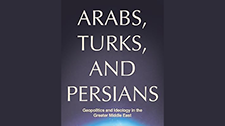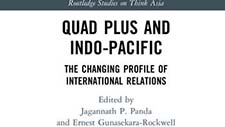-
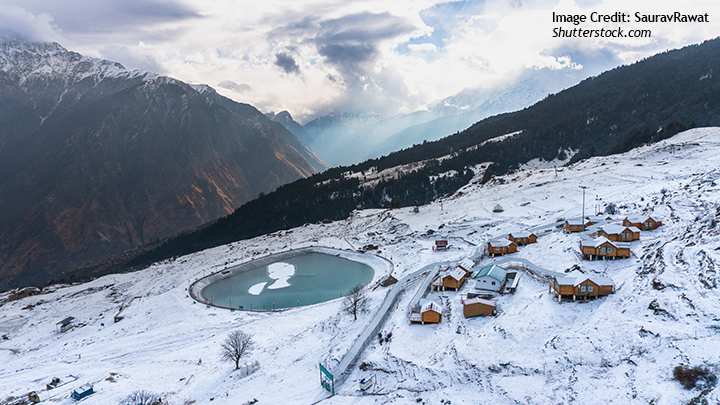
Report of the Webinar on Dam Construction & Tibet as a Hydropower Zone: Implications on Tibet’s Climate Crisis?
This report is an outcome of the webinar titled "Dam Construction & Tibet as a Hydropower Zone: Implications on Tibet’s Climate Crisis?" organized by the SCSA-IPA at the Institute for Security and Development Policy (ISDP). It was held on January 20, 2025, and was the second in a series on the Climate Crisis in Tibet, which sought to address China’s key hydropower projects in the region. This webinar analyzed the number of “Super-Dams” impacting the Tibetan Plateau, alongside the rivers affected, those involved, and what havoc this would bring to the Himalayan region and beyond. It considered the ecological impact, China’s weaponization of natural resources, and how the international community should respond. Download and read the webinar report here.
-
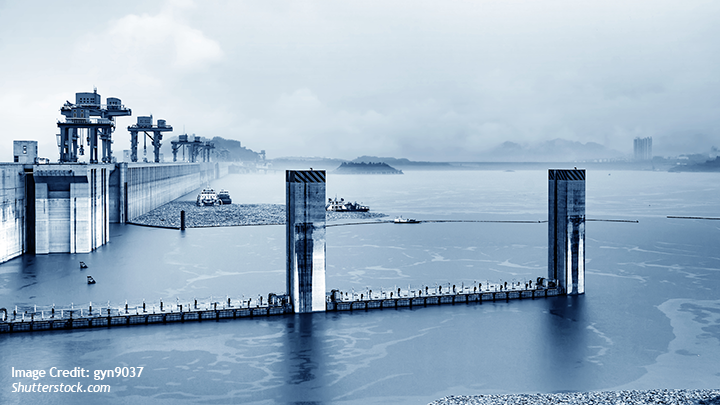
Cascading Effects: Will China’s New Dam Create A Himalayan Rift?
Jagannath Panda and Mrittika Guha Sarkar write that China’s continued push for dams on Tibetan rivers is a direct result of its growing demands for not only water for drinking and other purposes but also electricity amid shrinking resources. This latter demand, in turn, is largely compounded by China’s expanding infrastructure activities in Tibet, mainland China, and the border areas. Panda and Sarkar write that undoubtedly, the over-damming will weaken the Tibetan Plateau’s ecosystem, which is already under strain due to global warming. The Tibetan Plateau, often referred to as the “Third Pole,” is warming at a rate nearly two times the global average. This accelerated warming is melting glaciers rapidly, destabilizing seasonal river flows, and increasing sedimentation risks in dam reservoirs. Additionally, aerosol deposits in the region further amplify glacial retreat, compounding risks for downstream populations and ecosystems. These cascading climate risks not only endanger ecosystems but also exacerbate security concerns. Read this piece by Jagannath Panda and Mrittika Guha Sarkar in The National Interest here.
-
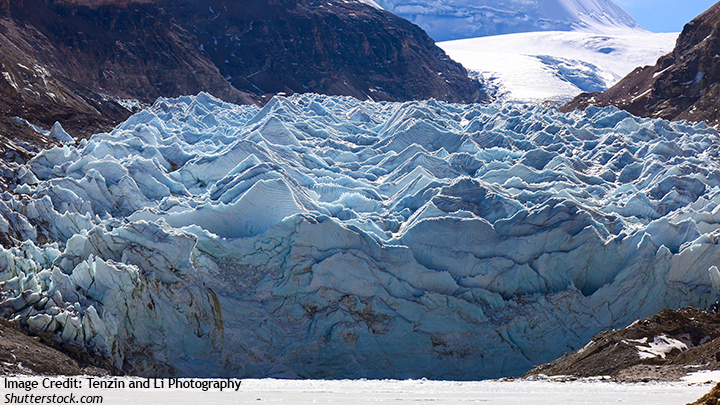
Does Anyone Care About the Climate Crisis in Tibet?
The Dalai Lama has always been a forward thinker. Over the years, he has tirelessly campaigned about the dangers of playing with natural forces or disturbing the ecological balance of the high mountains of Asia, including China. Even against the background of suffering due to the Dingri earthquake, the Dalai Lama not only offered prayers but also invoked “the Buddhist spirit of seeking to transform adverse circumstances into an opportunity for growth and thus a stage on the path to enlightenment.” But does the Dalai Lama, who retired from active politics in 2011, have the world’s ears? Jagannath Panda writes and asks: in the constant din of continually advancing technological needs, does the world even care about Dalai Lama's philosophy on nature/environment? More so, what are the Dalai Lama’s solutions for climate action? In what ways are the multiple crises for Tibetan culture and religion impacting climate change? What is the current impact of China’s role as an “occupier”? What will it take for the United Nations’ climate forums not to overlook the cultural, religious, and societal aspects of climate damage in Tibet? Read this by Jagannath Panda in The Diplomat.
-
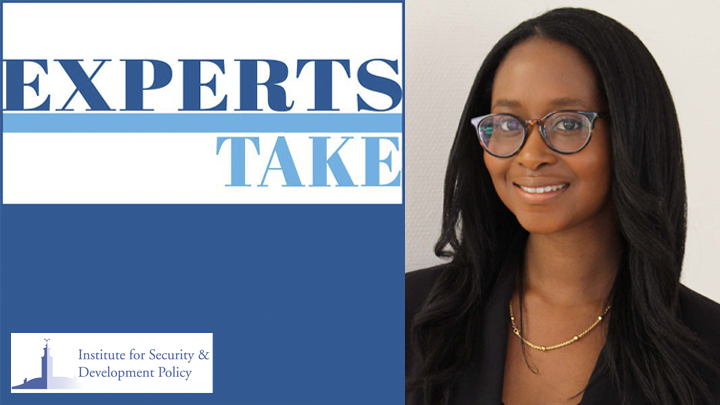
‘Critical to understand internal dynamics of China’: An Interview with FATOUMATA DIALLO
Fatoumata Diallo currently serves as the Acting Head of the Stockholm China Center and is a Research Fellow with the ISDP. With a background that includes working at the EU delegation to China in Beijing, Ms. Diallo brings a wealth of experience in international conflict studies and China-related research. She holds degrees from Leiden University in the Netherlands and the Institut National des Langues et Civilization Orientales (INALCO) in Paris, with a specialization in International Conflict Studies, International Relations, and Chinese Studies. Additionally, she has studied Chinese language at the Beijing Language and Culture University (BLCU). Her research areas encompass Chinese domestic politics and governance, EU-China relations, defence and security policies, and the political economy of China. In this interview, conducted by China Center interns Ms. Celine Hedin and Mr. Tony Su, the role of ISDP’s China Center and Ms. Diallo’s direction as the new Acting Head and her perspectives on China-related (EU-China) developments are further explored. The interview can be read and downloaded here.
-

Securing U.S. Critical Infrastructure against Chinese Cyber Threat – Trump 2.0 Imperative
Nistha Kumari Singh and Amrita Jash write that enhancing critical infrastructure resilience against cyberattacks is crucial to modernization and economic growth, and the United States has taken many significant steps in this direction. They further write that Washington’s current approach to strengthening critical infrastructure protection involves existing agencies (FBI, CISA, DoD) operating in highly centralized, sector-specific methods, often following distinct approaches. However, a unified framework for information sharing and an integrated approach across all relevant agencies is essential to enhance collaboration and sharing methods, argues Singh and Jash. Therefore, in light of the increasing threat from China, safeguarding America’s critical infrastructure is vital for the agenda of Trump 2.0. Read this piece by Nistha Kumari Singh and Amrita Jash here.
-

Taiwan’s Semiconductor Manufacturing Industry and Its Role in the International Supply Chain
Semiconductor products have emerged as the cornerstone of modern technology. The world’s critical dependence on semiconductors was highlighted during the shortage following the COVID-19 pandemic. Semiconductors are the materials and substances that are the foundation of microchips, also known as integrated circuits (ICs). Without ICs, industries could not supply the demand for the technology that modern society is dependent on, such as phones, cars, household appliances, defense technology, and medical devices. ICs are of varying sizes, measured in nanometers (nm), which equip devices with different capacities. For instance, 40nm chips can be applied to central processing units (CPUs), graphic processors, and hard disk drives while 3nm chips have been utilized in MacBooks, iPhone 15 Pro, and iPad Pro models. These individual ICs are derived from a wafer. A wafer is a disc thinly sliced from a silicon rod mainly made of silicon extracted from sand. This backgrounder by Stockholm Taiwan Center aims to provide an overview of Taiwan’s semiconductor industry, including its development and current role in the international semiconductor supply chain.
-

Assessing the Effectiveness of China’s Military Exercises in Restraining Taiwan’s Leadership
Beijing has been using coercive approaches to restrain Taiwan’s voices for decades. The Third Taiwan Strait Crisis in 1995 and 1996 set a precedent for Beijing to conduct large-scale military exercises to deter Taiwan’s leadership from advocating sovereignty and deepening its relations with other countries. Between 2022 and 2024, China conducted several large-scale military exercises around Taiwan in response to statements made by Taiwan’s leadership. With many military exercises being conducted as part of its coercive strategies, Beijing still faces the challenge of restraining Taiwan’s leadership. Under the leadership of the Democratic Progressive Party (DPP), Taiwan has consistently advocated for its sovereignty and sought greater engagement in international affairs. The effectiveness of China’s military exercise as a coercive tool to restrain Taiwan’s leadership thus is questionable. This brief by Yi-Chieh Chen analyzes the effectiveness of China’s use of military exercises to impact the behaviors of Taiwan’s leadership, focusing on the period between 2022 and 2024. Download and read this brief here.
-

Chinese Water Projects in Tibet: A “Continental Challenge”
Antonina Luszczykiewicz-Mendis writes on how and why China's water projects in Tibet amount to a continental challenge. She writes that the management of transboundary water resources originating in Tibet has become a critical geopolitical and geo-economic issue in Asia. In this issue brief Antonina Luszczykiewicz-Mendis examines China’s hydrological projects on the Tibetan Plateau and their implications for downstream countries. By exploring two key pillars of China’s water strategy—the construction of mega-dams and the South-North Water Diversion Project—the issue brief discusses both the domestic and international consequences of Beijing’s initiatives, such as environmental degradation, displacement of local populations, and the potential for Beijing to weaponize water as a geopolitical tool. In particular, it focuses on tensions between China and India, the involvement of Tibetan expatriate leadership, and the role of the U.S.-China rivalry. Download and read this issue brief by Antonina Luszczykiewicz-Mendis here.
-
ISDP opens the Stockholm Center for Research and Innovation Security (SCRIS)
ISDP is excited to announce the launch of the Stockholm Center for Research and Innovation Security (SCRIS). As global research and innovation face growing threats from misuse that harms security or violates ethical norms, the SCRIS will serve as an independent and sustainable thematic center at the ISDP to address these threats and advance solutions. The SCRIS is an independent and sustainable thematic center at the ISDP. With an international focus on cooperation between the U.S., EU, Indo-Pacific, and likeminded nations, particularly in the Nordic and Baltic regions, it aims to create an environment of awareness over concerned topics such as appropriation of know-how and proprietary information and its impact on the economic development of individual nations. The center’s research and activities focus on issues of securitization within Innovation, Critical Technology, IP protection, Technology transfer, R & D, and Manufacturing. The SCRIS will host open conferences, webinars, and fireplace discussions to raise awareness about its key issues, offering a global platform where important findings can be shared with a wider audience. Soon, the center will launch its digital Research and Innovation Series (RIS) where it will bring together scholars and experts from diverse fields and backgrounds.
Latest Publications
Report of the Webinar on Dam Construction & Tibet as a Hydropower Zone: Implications on Tibet’s Climate Crisis? (Climate Crisis in Tibet-II)
This webinar, organized by the SCSA-IPA at the Institute for Security and Development Policy (ISDP), was held on January 20, 2025. It is the second in a series on the […]
Cascading Effects: Will China’s New Dam Create A Himalayan Rift?
In mid-December, China marked the thirtieth anniversary of the official inauguration of the Three Gorges Dam on the Yangtze River, the world’s largest hydroelectric project (in terms of installed capacity). Notwithstanding the decades-long […]
‘Critical to understand internal dynamics of China’: An Interview with FATOUMATA DIALLO
Fatoumata Diallo currently serves as the Acting Head of the Stockholm China Center and is a Research Fellow. With a background that includes working at the EU delegation to China […]
- Tokayev's Tightrope: Kazakhstan's Balancing Act in a Shifting World
- Chinese-Style Modernization in Central Asia: Capacities and Constraints
- Transport Projects in Afghanistan: Iran's Ambitions and a Balancing Central Asia
- The China-Kyrgyzstan-Uzbekistan Railway: China's Strategic Expansion in Russia's Backyard



